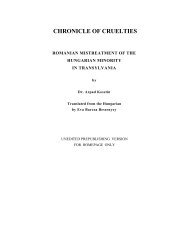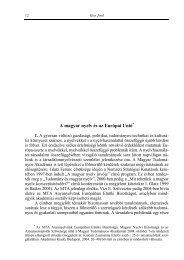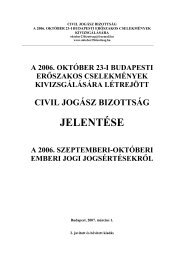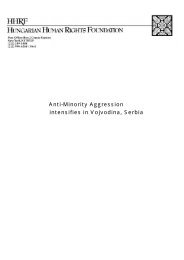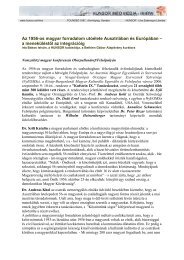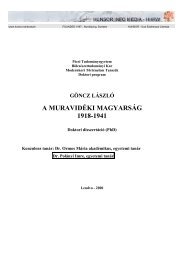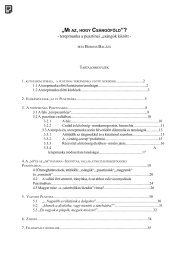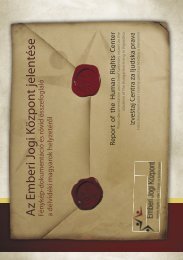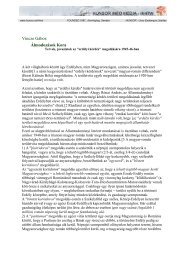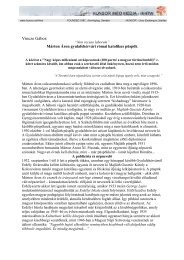PLEASE NOTE: This book contains graphic description ... - HUNSOR
PLEASE NOTE: This book contains graphic description ... - HUNSOR
PLEASE NOTE: This book contains graphic description ... - HUNSOR
You also want an ePaper? Increase the reach of your titles
YUMPU automatically turns print PDFs into web optimized ePapers that Google loves.
about the others. I felt that he knew a lot more than he let on. The village priest was alsoreleased.Rumors began to become more and more widespread that a big pit had been dug in afield, into which the men had been shot . There was a farm not far from there where firing andcries could be heard all night. A few years later, I learned that there had been a man who hadmanaged to escape in the darkness and who had been a witness of the whole massacre. He saidthat the lucky ones had been shot, while the rest had been put to death by means of bayonets andcudgels. We didn't know for a long time how many people had been killed there.In West Germany organizations, action groups were formed in relation to this affair, one ofwhich was called the Association of the Survivors of Szentfulop. They organized meetings andalso issued a number of publications. According to them, 212 men were killed there that night.The place of the massacre was surrounded by soldiers. The villagers were not allowedanywhere near. But this wasn't the end of the suffering of the people of Szentfulop. In the nextfew weeks, Serbian families were settled into almost every house. They came from somewhere,probably the hills of Bosnia or Montenegro.The spring of 1945 on Easter Saturday, when there were only old men, women andchildren left in the village, it was announced that all Swabs had to pack up their things. After thevillagers had been gathered together, the march commenced to the railway station where theyspent the night. Next day after "mustering", all the packages and personal items were takenaway from the poor people. Special care was taken to collect jewelry. People were told that ifthey couldn't pull the rings from their fingers, they would be cut off. Then they were brutally andcruelly herded into84wagons and transferred to Gakova. There were several thousand Swabs huddled together in thesheds and barns or empty apartments under close and armed confinement. I wasn't there at thistime only my mother and 11-year old sister. I had been transported for agricultural work, despitethe fact that I was only 14. We were also well guarded. The fellows and I harvested the cornfirst. It was very cold, the work had been left unfinished that fall. It was only after a number ofweeks, that I came to the camp of Gakova.As far as we knew, there were about 15,000-20,000 of us in Gakova. We were sleepingon our sides, because there was very little room. When more and more people began to die, therewere more and more free places. Sometimes we had nothing to eat at all. Many starved to death,and others were frozen, but as I remember, many died of typhoid fever. Almost every one wasill.The attitude of the guards was really cruel and they showed horrifying examples every once ina while to impress their power over us so that we would live in fear. One family made an attemptto escape, but they were caught. They had to carry a board around the camp saying: "<strong>This</strong> willhappen to you if you try to escape." They made them dig their own graves, shot and pushed theminto the graves with the whole camp watching. Physical abuse was frequent also. Though theydidn't hit me or my sister, they once beat up my mother when she was sent to pick apples withother adults and she tried to hide some for her children.The number of the dead was increasing all the time. First the corpses were buriedseparately, in fact they even made coffins for the very first ones. Later on they threw them all inone big pit.



